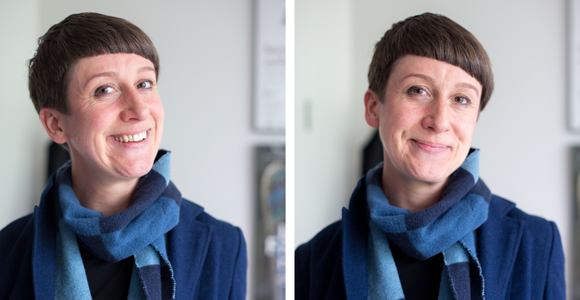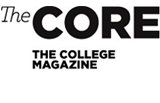
Office hours with Aden Kumler, AB’96
Stuff matters
A College alumna learns you can go home again. You may just have to put your bass guitar in storage.
Edited and condensed by Sean Carr, AB’90
After earning her doctorate from Harvard, Aden Kumler, AB’96, returned to the University in 2007 as assistant (now associate) professor in art history and the College. She is the author of Translating Truth: Ambitious Images and Religious Knowledge in Late Medieval France and England (Yale University Press, 2011) and the winner of a 2013 Quantrell Award for Excellence in Undergraduate Teaching. The Core visited Kumler in her Cochrane-Woods Art Center office, which once belonged to the late Michael Camille, one of Kumler’s undergraduate mentors.
What was it like coming back to UChicago as a faculty member?
There was something personally challenging about it because I had such vivid memories of these classes where my mind had been completely blown. The idea that I could do that for another person was almost impossible.
My first year teaching the introductory medieval art survey was a disaster. Now that’s my favorite class. I have the undergraduates who’ve never taken art history, and most have not had any kind of medieval class. I’m seeing new things constantly. So I’ve developed a kind of addiction to teaching that class.
Did you enter the College thinking “art history” and “medieval”?
Not at all. I wanted to do comparative literature, Francophone and English and American feminist autobiography. But I took a graduate class with Françoise Meltzer on Mariology. It completely blew me away. It was my first introduction to poststructuralist French psychoanalytic thought. A lot of the stuff we read focused on medieval culture, medieval ideas. Then I took a class called the Art of the Book in the Middle Ages with Michael Camille. And there was something about the combination of those two classes. I was like, why on earth would I ever do anything other than this?
Is there a central question, or set of questions, you’re trying to explore?
The thing I care about most is asking, how do the material conditions of life shape the possibilities of experience and thought? The project of art history is to grapple with how the material, physical conditions have made history—and vice versa. Because people make things, and things, I think, actually remake people.
I don’t believe I will ever see like a medieval person or think like a medieval person or feel like a medieval person. What I do have, what I can struggle with—hopefully in productive, creative ways—are the things medieval people made. Even lowly, modest, meant-for-the-garbage-heap kinds of things are hugely significant, and I actually think they’re our only access to the past.
Rumor has it you were in a band during your student days.
I was. When I was in the College, Hyde Park had an amazing band scene. Almost everybody I knew was in a band or else working at WHPK. We used to have all these shows in the laundry rooms of apartments like the Annette that would go until three o’clock in the morning. Bands would play Lounge Ax and then would come to Hyde Park and play a little aftershow.
My band was called Toulouse. I played bass. I was in the band until partway through my second year in grad school. We were an opening band at the Knitting Factory in New York, and I remember sitting there and it was nine o’clock at night, I was so tired, and I was trying to write a seminar paper. I thought, this is not working. I realized I couldn’t be touring in a band and be a successful budding art historian.
